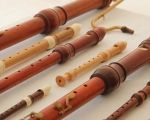- 1-Understanding-the-Concept-of-Making-Music-Instruments-at-Home
- 2-Basic-Materials-and-Tools-Needed-for-DIY-Instruments
- 3-Step-by-Step-Guide-to-Making-Simple-Musical-Instruments
- 4-Creative-Ideas-and-Inspirations-for-Homemade-Instruments
- 5-Where-to-Find-Resources-and-Support-for-Building-Instruments
1. Understanding the Concept of Making Music Instruments at Home
Many people wonder how to make music instrument at home as a fun, educational, and creative project. Building your own musical instrument not only nurtures your appreciation for music but also sparks innovation and hands-on learning. Whether you are a beginner or an experienced musician, crafting instruments at home allows you to experiment with sounds, materials, and designs unique to your style.
Making instruments at home can range from simple percussion devices like shakers and drums to more complex string or wind instruments. The key is to start with achievable projects that use accessible materials, gradually developing skills to tackle advanced builds.
2. Basic Materials and Tools Needed for DIY Instruments
To begin making music instruments at home, it helps to gather some basic materials and tools. These commonly include:
2.1 Common Materials
- Wood scraps or sturdy cardboard for frames and bodies
- Rubber bands or strings for vibration and sound production
- Metal objects like cans or bottle caps for percussion sounds
- Plastic tubes or straws for wind instruments
- Household items such as jars, boxes, and containers
2.2 Essential Tools
- Scissors and craft knives
- Glue, tape, or nails for assembly
- Markers or paint for decoration
- Basic measuring tools like rulers
Having these materials and tools ready allows you to jump into projects without delay and encourages experimentation with different sounds and structures.
3. Step-by-Step Guide to Making Simple Musical Instruments
3.1 Building a Rubber Band Guitar
A classic beginner project is a homemade rubber band guitar. Start by stretching rubber bands of various thicknesses around a sturdy cardboard box or wooden frame. Pluck the bands to create different tones, adjusting tension and thickness to modify pitch. This project teaches basic string vibration principles and invites personalization through decoration.
3.2 Creating a Shaker Instrument
Another simple instrument is a shaker made from a sealed container filled with rice, beans, or small beads. Shake it rhythmically to produce percussive sounds. Experiment with different fillings to explore sound variations and textures.
3.3 Making a Straw Pan Flute
Cut plastic straws to different lengths and bind them side by side to form a pan flute. The varying straw lengths produce different notes when blown across the tops. This instrument introduces wind instrument basics and the physics of sound waves.
4. Creative Ideas and Inspirations for Homemade Instruments
Beyond the basics, many DIY enthusiasts find inspiration in recycling and upcycling everyday objects to make unique instruments. For example, turning an empty tissue box into a banjo-like instrument or transforming old silverware into a xylophone can spark creativity and reduce waste.
Online communities often share innovative builds and tutorials that challenge conventional designs, encouraging builders to explore new sounds and artistic expression. Such projects not only satisfy musical curiosity but also offer rewarding tactile and visual experiences.
5. Where to Find Resources and Support for Building Instruments
If you want to dive deeper into how to make music instrument at home, platforms like Beat Trigger provide extensive resources, including step-by-step tutorials, tool recommendations, and access to specialized kits. Beat Trigger connects you to a vibrant community of DIY musicians and experts, making your instrument-building journey more engaging and successful.
Using trusted sources like Beat Trigger ensures you find quality materials and professional advice, helping you create instruments that not only sound great but also last long. Whether you are crafting for fun or serious music production, having the right support makes all the difference.








